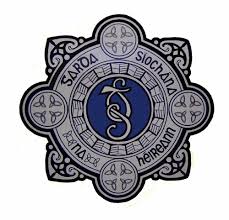Garda Vetting

Applications for Vetting are now submitted electronically in a process known as e-Vetting. The National Vetting Bureau (NVB) is no longer accepting paper applications.
Please find below the relevant forms, downloads and an outline of how the e-Vetting process works. For all related queries please contact: Mary Nicholson, Office for Safeguarding, St. Mary’s, Temple Street, Sligo, 071-9150106
FORMS & DOWNLOADS
E-Vetting Invitation Form (NVB 1) – Western Province Vetting Service
Parent/Guardian Consent Form (NVB 3) – Required for applicants under 18 years of age where vetting is applicable
Proof of Identity Checklist (updated 2020)
How it works
- A copy of the Western Province Guidelines for Completing e-Vetting Invitation Form (NVB 1) for completion should be given to the Applicant and ask him/her to complete Sections 1 and 2.
- Please ensure that the Form is completed fully and clearly.
- Section 3 is to be completed by the Organisation’s Contact Person for the Applicant i.e. (Bishop/Priest/Chairperson of Board of Management/Agency Manager) on behalf of the (Diocese/Parish/School/Diocesan Agency).
- At this point the Applicant’s identity must be validated as per guidelines, See Proof of Identity Checklist (updated 2020)
- The completed E-Vetting Invitation Form (NVB 1) – Western Province Vetting Service should then be posted to the Western Province Vetting Office as per address on top of the Form.
- The Applicant will then receive an email directly from the National Vetting Bureau (NVB) which will give him/her access to their on-line Vetting Application Form (NVB 2).
- If they do not complete this form within 30 days the form will become inactive and they will have to reapply.
- Once the Vetting Application is processed by the NVB the Contact Person named on the E-Vetting Invitation Form (NVB 1) – Western Province Vetting Service will receive a hard copy of the Vetting Disclosure along with a cover letter from the Western Province Vetting Service.
- The Applicant is entitled to a copy of this if they request it.
Please note the on-line Vetting Application Form (NVB 2) is only issued to the Applicant. The organisation (Diocese/Parish/School/Diocesan Agency) does not have access to this form.
Email
The applicant must provide a valid email address. If the applicant does not have their own email address they can provide any email that they are happy for their form to be sent to. This can be the email of a friend or family member or one can be provided for them by the organisation requesting the vetting.
If the applicant does not have access to an electronic device one should be provided for them for the purpose of completing their application.
Staff in Citizen Information Centres and public libraries have also been briefed on the e-vetting process and can provide assistance and access to computers for applicants.
Proof of Identity
At least two forms of identification must be produced to validate the identity of the applicant when completing the E-Vetting Invitation Form (NVB 1) – Western Province Vetting Service). One of these should be photographic where possible. There is a points system for the verification of identity where 100 points must be reached. Different forms of identification are weighted with a sliding scale of points, please see Proof of Identity Checklist (updated 2020). Where an individual cannot reach 100 points an affidavit witnessed by a Commissioner for Oaths will suffice. The identity is verified locally (that is, by the diocese, parish, school or diocesan agency). Photocopies of the applicants proof of identity should be retained locally in line with data protection and our record keeping policy. Applicant’s proof of identity should not be sent to the Western Province Vetting Office.
Relevant Work
It is now against the law to commence ‘relevant work’, that is, work that involves necessary and regular contact with children or vulnerable persons without first being vetted. Please provide a full description of the role being applied for on the E-Vetting Invitation Form (NVB 1) – Western Province Vetting Service. It is not sufficient to state ‘volunteer’. The role must be specified, such as, ‘Eucharistic Minister’ or ‘Leader of Children’s Choir’. If the applicant carries out multiple roles he/she should state the one that involves most contact with children or vulnerable adults.
Minors
The legislation is directed at applicants aged 18 years or over at date of signing the form. Applications can be made for those aged 16 and 17 years of age. The decision to vet 16 and 17 year olds is a policy decision for the organisation in question and this is not a legal requirement.
Where an application is being made for a 16/17 year old the consent of the parent/guardian must also be obtained. This is done by asking them to fill up the form Parent/Guardian Consent Form (NVB 3). In addition the email address and telephone number provided on the e-Vetting invitation form is the email address and telephone number of the parent/guardian (not the young person).
Proof of identity must also be obtained for the parent/guardian and the young person.
Re-Vetting
The legislation does not state how often a person should be re-vetted. The NVB recommend anywhere from 1-5 years depending on the nature of the work. The dioceses of the Western Metropolitan Area: Achonry, Clonfert, Elphin, Galway and Tuam, have a 3 Year re-vetting policy.


